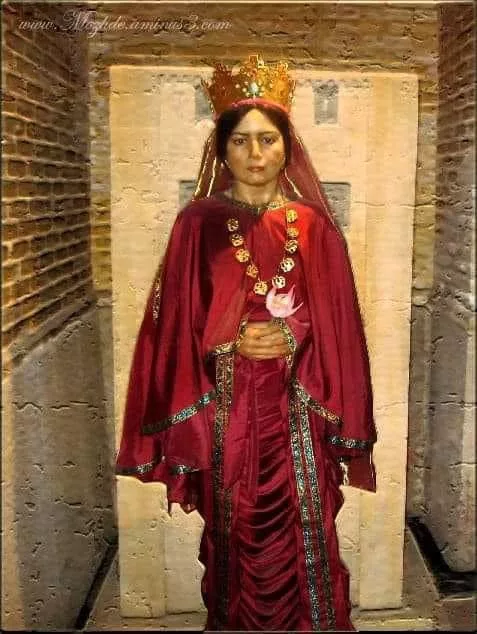
The famed Achaemenid Empire was an ancient Iranian empire that was founded by the renowned Cyrus the Great in 550 BC. It quickly arose as one of the leading global powers of the time, and swept through much of the near East with unyielding dominance. Those who were closest to Cyrus the Great enjoyed great wealth and power, but also had crucial roles to play. One of these individuals was Queen Atossa, the daughter of Emperor Cyrus himself, and the wife of the subsequent ruler, Darius the Great. What was her life like, and what is her story? Is it true that women also had a lot of power in those ancient times?
Queen, Daughter, Ruler
The name “Atossa” is of Old Persian origin, and its exact meaning is not entirely clear. Ancient languages and their meanings have evolved and, in some cases, been lost over time. What scholars today know is that Atossa is actually the Greek transliteration of the Old Persian name Utauθa. It could mean one of the following: “bestowing very richly” or “well trickling” or “well granting”. In the Achaemenid period, names carried great significance, especially among royalty. Names were often chosen to reflect the qualities, aspirations, or religious beliefs of the individual or their family. Atossa being the daughter of Cyrus the Great and the wife of Darius I would have been given a name that embodied the dignity and status of her lineage. Zoroastrianism, the dominant religion at the time, founded by the prophet Zoroaster, played a significant role in shaping Persian culture and beliefs, and this influence is likely to have extended to the naming conventions of the time.
Darius the Great, founder of the Achaemenid Empire, the First Persian Empire. (Public Domain)
Atossa was born around 550 BC, and her father, Cyrus the Great, was the founder of the First Persian Empire and one of history’s most influential conquerors. Her mother was Cassandane, one of Cyrus’ wives. She had several siblings, including her brother, Cambyses II, who later became the king of Persia. Information about Queen Atossa’s early life and childhood is relatively scarce, and much of what is known comes from ancient Greek historians, primarily Herodotus. Of course, as a princess, Atossa would have received an education befitting her royal status. This education likely included learning about Persian customs, traditions, languages, history, and possibly even religious teachings, particularly those associated with Zoroastrianism
A Royal Marriage
When she was still a young woman, Atossa married a very powerful man in the empire – Darius I. When Cyrus the Great died, he was succeeded by his son, Cambyses. However, in a power struggle that ensued, Darius – a powerful nobleman – emerged as the victor, and assumed the role of the Emperor. He married Atossa, and thus cemented his position in the Achaemenid royal dynasty. Atossa’s marriage to Darius I became crucial in determining the succession of the Persian throne. Darius’ claim to the throne was thus fully legitimized through his marriage to Atossa, who was a descendant of the royal lineage.
We learn from ancient sources that Atossa held considerable influence in the Persian court as the queen, and was involved in key state affairs. She was not merely a passive figure but played an active role in shaping policies and decisions, particularly during the reign of her husband, Darius I. What is more, she bore her husband a son and heir, Xerxes I, who would go on to become the next emperor later on.
Her life was not without trouble, however. Herodotus writes that Atossa was troubled by a “bleeding lump on her breast”. A Greek slave called Democedes, supposedly excised the tumor, making this the first recorded case of mastitis in history.
As a queen, Atossa would have been an important patron of the Zoroastrian religion, which was the predominant faith in the Persian Empire. Zoroastrianism played a crucial role in shaping Persian culture and society, and its influence extended to the royal court. She was also alive long enough to witness her son Xerxes I, by then an Emperor, invade Greece.
Still, it is worth noting that while Atossa’s life and contributions are fascinating, historical information from this time is often limited and subject to some ambiguity. Greek historians were often biased when writing about the Persians. So, as with many ancient historical figures, the details surrounding Queen Atossa’s life may continue to be subjects of research and exploration by historians and archaeologists. But even so, we wait eagerly for new fascinating details about this Queen’s life and deeds.
